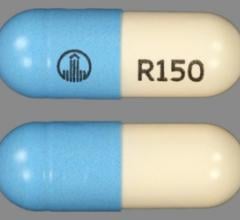November 12, 2015 — Preventing blood clots with drugs such as heparin has become a common practice for fighting some heart and lung conditions, and for certain surgeries. But patients who take them also need their blood to clot to heal incisions made during operations. Researchers are developing a new way to tackle this problem — by pairing snake venom with nanofibers. Their study using the therapy on rats appears in the journal ACS Biomaterials Science & Engineering.
Currently, doctors can take several approaches to reduce bleeding in surgical patients on heparin and other blood thinners, including applying pressure, sutures, foams and adhesives. But these options can come with potentially serious risks. Some can introduce toxic byproducts into a patient, spark an allergic reaction or cause tissue to die. To come up with a better alternative, Jeffrey D. Hartgerink, Ph.D., and colleagues turned to an enzyme from snake venom that causes blood to coagulate even if it contains heparin. Called batroxobin, the enzyme is already in clinical use for another condition. But using it to control bleeding is problematic because it dissolves quickly and moves away from where it's originally introduced — a problem when trying to heal surgical incisions.
To override batroxobin's tendency to disperse, the researchers paired it with "sticky" nanofibers to make the enzyme stay put. The therapy, which was tested on rats treated with heparin, promoted localized blood clotting at a wound site within 20 seconds. The researchers say with further testing, the approach could eventually help make surgery safer for human patients taking heparin.
The authors acknowledge funding from the National Institutes of Health and the Welch Foundation.
For more information: www.pubs.acs.org/journal/abseba


 August 28, 2023
August 28, 2023 








